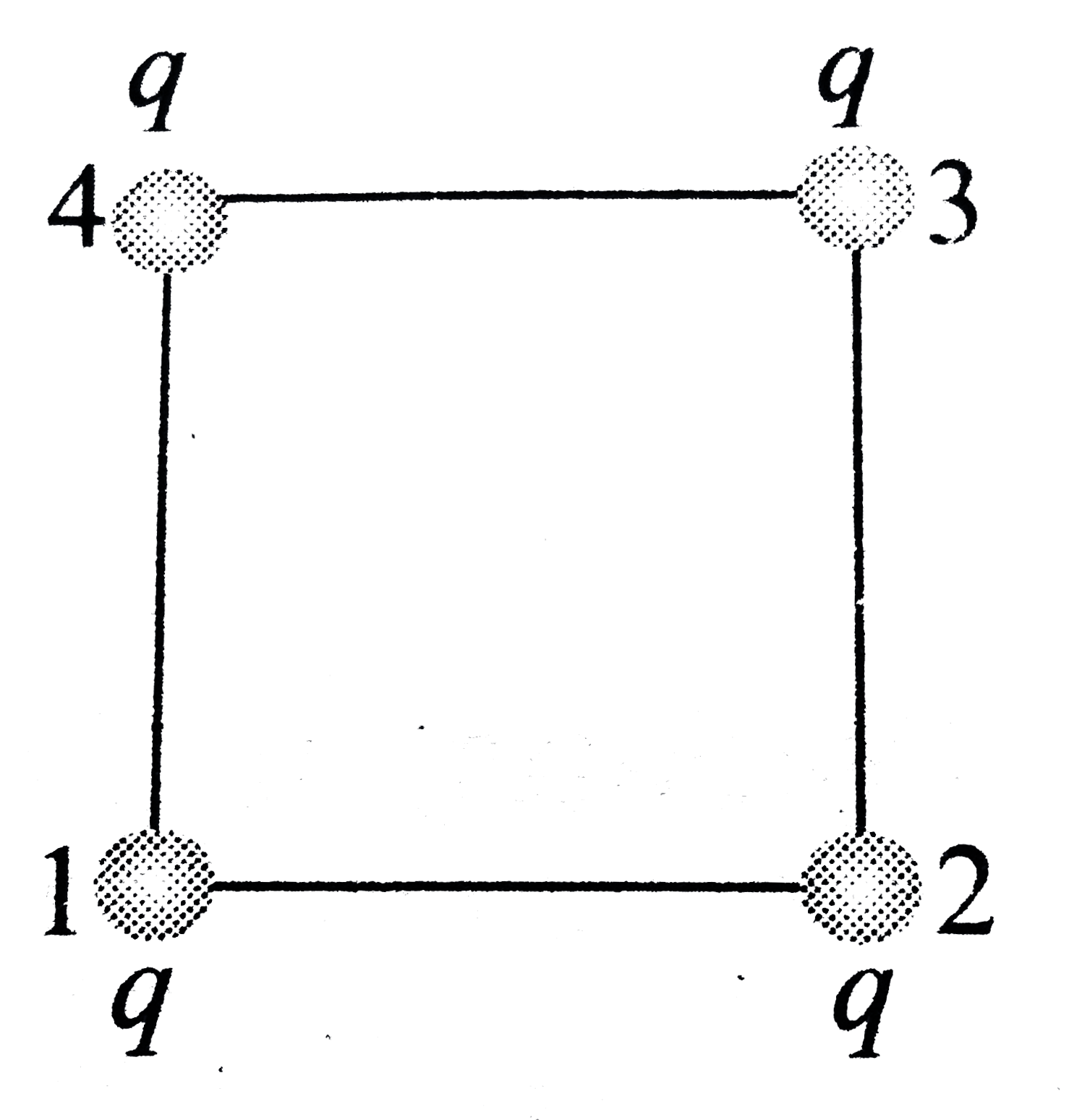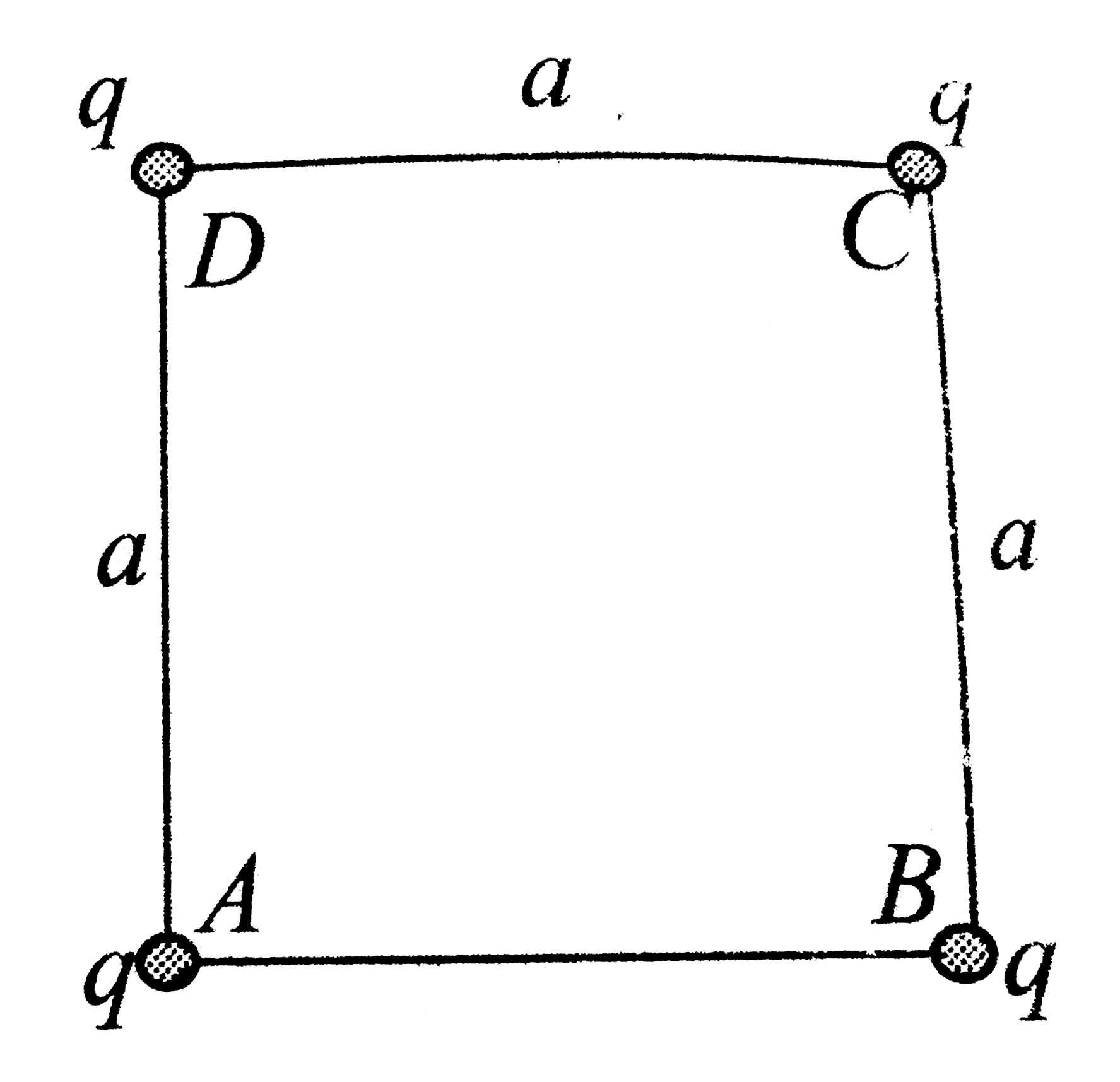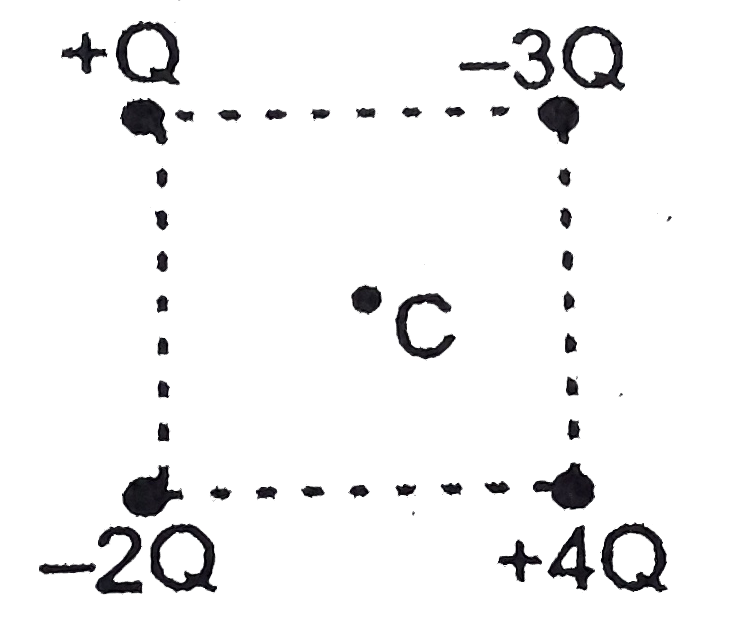In a regular polygon of n sides, each corner is at a distance r from the centre. Identical charges are placed at (n−1) corners. At the centre, the intensity is E and the potential is V. The ratio V/E has magnitude
rn
r(n−1)
(n−1)/r
r(n−1)/n
The correct Answer is:B
To solve the problem, we need to find the ratio VE where V is the electric potential at the center of a regular polygon with n sides and E is the electric field intensity at the center due to n−1 identical charges placed at the corners.
1. Understanding the Setup:
- We have a regular polygon with n corners.
- Identical charges q are placed at n−1 corners, leaving one corner empty.
- The distance from the center of the polygon to each corner is r.
2. Electric Field Calculation:
- The electric field E at the center due to a single charge q placed at a distance r is given by:
E=kqr2
- Since there are n−1 charges, we need to consider the vector sum of the electric fields due to these charges. However, due to symmetry, the contributions from the charges will cancel out in certain directions.
- The net electric field E at the center due to n−1 charges can be derived from the symmetry of the polygon. The resultant electric field will be directed away from the empty corner.
3. Potential Calculation:
- The electric potential V at the center due to a single charge q is given by:
V=kqr
- Since there are n−1 charges, the total potential at the center is:
V=(n−1)⋅kqr=(n−1)kqr
4. Finding the Ratio VE:
- Now, we need to find the ratio VE:
VE=(n−1)kqrkqr2=(n−1)kqr⋅r2kq
- Simplifying this gives:
VE=(n−1)r2r=(n−1)r
5. Final Result:
- Therefore, the ratio VE has a magnitude of:
VE=r(n−1)
Conclusion:
The correct answer is r(n−1).
- We have a regular polygon with n corners.
- Identical charges q are placed at n−1 corners, leaving one corner empty.
- The distance from the center of the polygon to each corner is r.
- The electric field E at the center due to a single charge q placed at a distance r is given by:
E=kqr2
- Since there are n−1 charges, we need to consider the vector sum of the electric fields due to these charges. However, due to symmetry, the contributions from the charges will cancel out in certain directions.
- The net electric field E at the center due to n−1 charges can be derived from the symmetry of the polygon. The resultant electric field will be directed away from the empty corner.
- The electric potential V at the center due to a single charge q is given by:
V=kqr
- Since there are n−1 charges, the total potential at the center is:
V=(n−1)⋅kqr=(n−1)kqr
- Now, we need to find the ratio VE:
VE=(n−1)kqrkqr2=(n−1)kqr⋅r2kq
- Simplifying this gives:
VE=(n−1)r2r=(n−1)r
- Therefore, the ratio VE has a magnitude of:
VE=r(n−1)
The correct answer is r(n−1).
Topper's Solved these Questions
- ELECTROSTATIC POTENTIAL AND CAPACITANCE BOOK - NCERT FINGERTPS ENGLISHCHAPTER - ELECTROSTATIC POTENTIAL AND CAPACITANCE EXERCISE - EXEMPLAR PROBLEMS
3 Videos
- ELECTROSTATIC POTENTIAL AND CAPACITANCE BOOK - NCERT FINGERTPS ENGLISHCHAPTER - ELECTROSTATIC POTENTIAL AND CAPACITANCE EXERCISE - ASSERTION & REASON
15 Videos
- ELECTROSTATIC POTENTIAL AND CAPACITANCE BOOK - NCERT FINGERTPS ENGLISHCHAPTER - ELECTROSTATIC POTENTIAL AND CAPACITANCE EXERCISE - Assertion And Reason
15 Videos
- ELECTROMAGNETIC WAVESBOOK - NCERT FINGERTPS ENGLISHCHAPTER - ELECTROMAGNETIC WAVESEXERCISE - Assertion And Reason
15 Videos
- MAGNETISM AND MATTER BOOK - NCERT FINGERTPS ENGLISHCHAPTER - MAGNETISM AND MATTER EXERCISE - NCERT Exemplar
5 Videos
Similar Questions
In a regular polygon of n sides, each corner is at a distance r from the centre. Identical charges each of magnitude q are placed at corners. The field at the centre is
View SolutionIn a regular hexagon each corner is at a distance .r. from the centre. Identical charges of magnitude .Q. are placed at 5 corners. The field at the centre is (K=14π∈0)
View SolutionIf a regular polygon of n sides has circum radius R and inradius r then each side of polygon is:
View SolutionABC is an equilateral triangle. Charges +q are placed at each corner. The electric field intensity at the centroid of triangle will be
View SolutionFour identical point charges q are placed at four corners of a square of side a. Find the potential energy of the charge system.
 .
.
View SolutionThe magnitude of electric intensity at a distance x from a charge q is E.An identical charge is placed at a distance 2x from it Then the magnitude of the force it experience is ..
View SolutionFour identical charges q are placed at the corners of a square of side a. Find the potential energy of one of the charges due to the remaining charges.
 .
.
View SolutionA charge Q is placed at each corner of a cube of side a. The potential at the centre of the cube is
View SolutionFour point charges are placed at the corners of a square of side l. Calculate potential at the centre of square.

View SolutionThe gravitational potential energy of a body at a distance r from the centre of earth is U. Its weight at a distance 2r from the centre of earth is
View Solution
